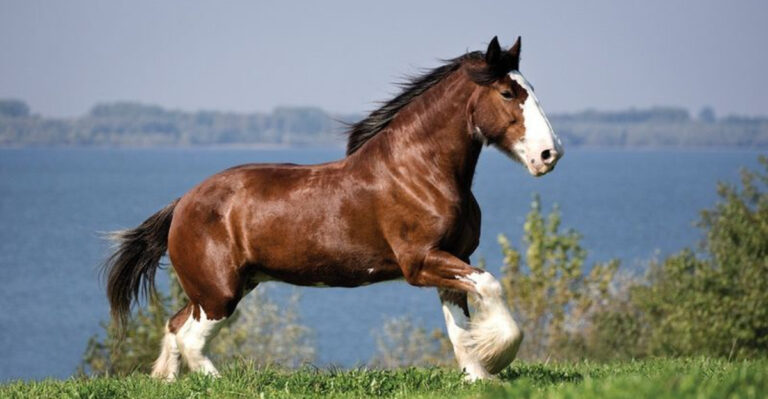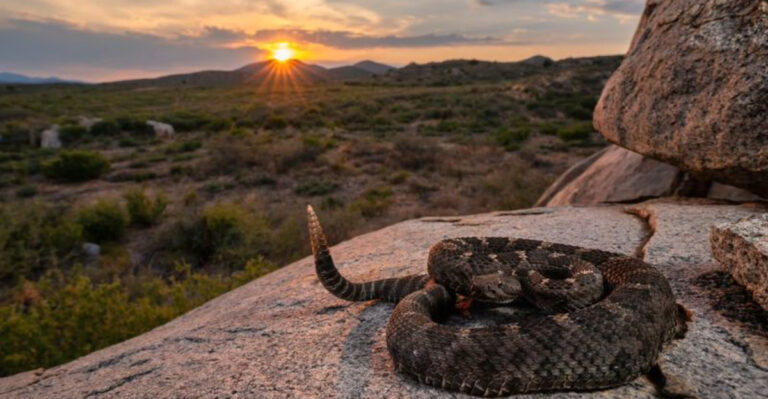14 Snakes That Rattle, Hiss, Or Puff Up To Scare You Off

Snakes have evolved amazing ways to protect themselves from threats without always having to bite.
From rattling tails to expanding neck hoods, these warning signals give us a chance to back away before things get dangerous.
1. Rattlesnake’s Famous Warning System

The iconic sound of a rattlesnake’s tail serves as nature’s perfect alarm system. Those specialized scales at the tail end vibrate against each other, creating that unmistakable buzzing sound that makes hikers freeze in their tracks.
Baby rattlers are born with just a single button, adding a new segment with each skin shedding. Contrary to popular belief, you can’t tell a rattlesnake’s age by counting its rattle segments because they often break off in the wild.
2. Cobra’s Intimidating Hood Display

When threatened, cobras perform one of nature’s most dramatic displays. They raise the front portion of their body and flatten their neck ribs outward, creating that famous hood shape that instantly signals danger.
The expanded hood makes the snake appear much larger to potential threats. Many cobra species even have special markings on the back of their hoods that resemble eyes or faces, adding another layer of visual warning to predators who might consider attacking.
3. Hognose Snake’s Oscar-Worthy Performance

Masters of theatrical defense, hognose snakes first try intimidation by flattening their heads and necks while hissing loudly. Their upturned snouts give them their distinctive name and help them dig through soil.
If the tough-guy act fails, they switch to an elaborate death performance. They roll onto their backs, mouth agape, tongue hanging out, and may even release a foul-smelling musk. They’ll repeatedly flip back over if turned right-side up, committed fully to their dramatic performance.
4. Puff Adder’s Alarming Hiss
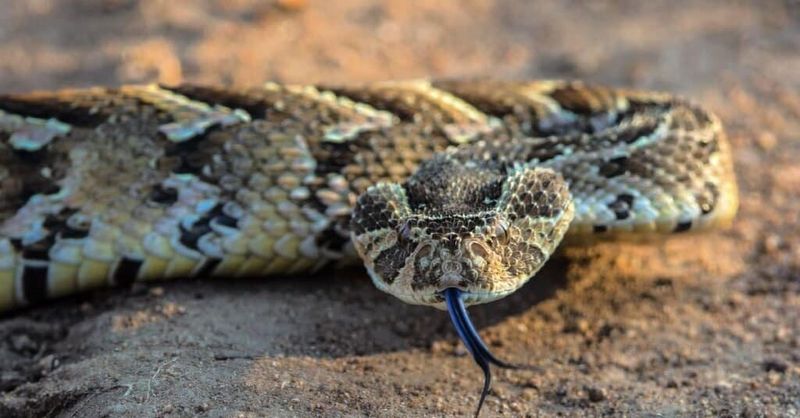
The puff adder earned its name from its impressive defensive display. When threatened, it inflates its body with air and releases a loud, sustained hiss that sounds like air escaping from a tire.
This stocky African viper coils into an S-shape while hissing, ready to strike if provoked further. The sound serves as a clear warning to back away. Despite being relatively slow-moving snakes, puff adders have lightning-fast strikes when they feel cornered.
5. King Cobra’s Royal Intimidation
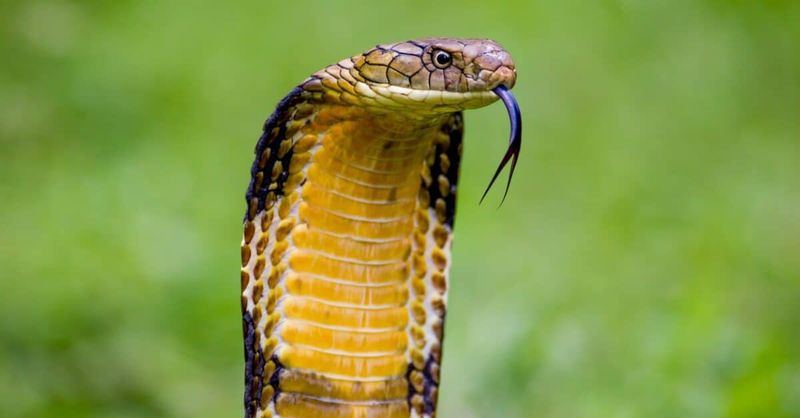
The world’s longest venomous snake doesn’t just display a hood—it elevates its threat display to royal levels. King cobras can raise the front third of their body straight up, towering at human chest height while spreading an impressive hood.
Their hiss sounds more like a growl, adding to their intimidation factor. King cobras are smart enough to recognize human movement patterns and will track a person’s movements with their gaze while maintaining their defensive posture, making them appear eerily aware.
6. Ball Python’s Protective Coil
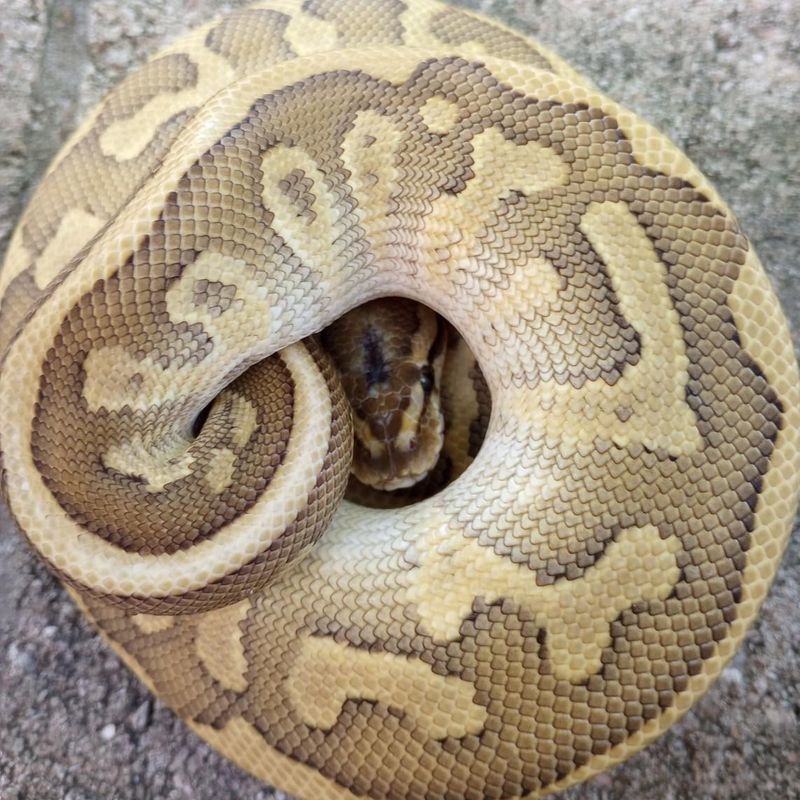
Unlike the dramatic displays of other snakes, ball pythons take a more modest approach to self-defense. When frightened, they curl into a tight ball with their head tucked safely in the middle of their coils.
This behavior gave them their common name. Their rounded shape makes it difficult for predators to grab them effectively. Ball pythons may also hiss softly from this position, but their main strategy relies on becoming an awkward-to-eat ball rather than an intimidating threat.
7. Gopher Snake’s Rattlesnake Impersonation
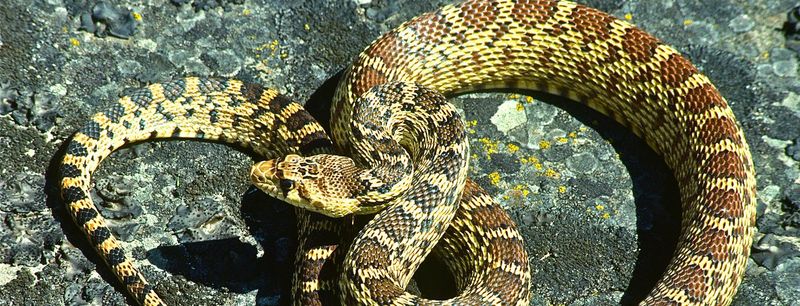
Gopher snakes have evolved one of nature’s most impressive mimicry acts. When threatened, they flatten their heads to appear triangular like a rattlesnake, coil up in striking position, and rapidly vibrate their tails against dry leaves or gravel.
The resulting sound closely resembles a rattlesnake’s warning. They even hiss loudly while exhaling forcefully, making their bodies puff up in a convincing display. This remarkable mimicry helps them avoid predators that have learned to fear rattlesnakes.
8. Gaboon Viper’s Explosive Warning
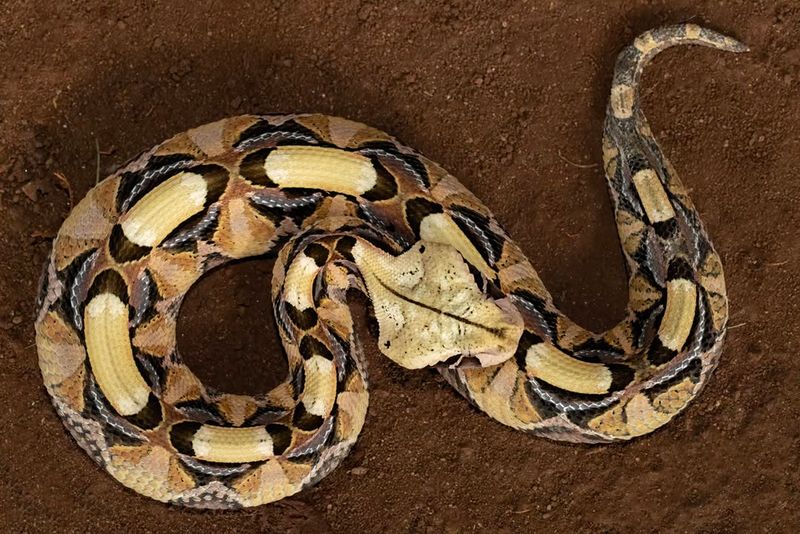
With the longest fangs and heaviest venom yield of any snake, the Gaboon viper prefers to avoid confrontation. When disturbed, these normally placid snakes inflate their massive bodies and emit an extraordinarily loud hiss that sounds like a balloon deflating.
Their intricate leaf-pattern camouflage makes them nearly invisible on the forest floor. If the hissing doesn’t deter a threat, they may rapidly vibrate their tails, creating a buzzing sound in leaf litter that serves as a final warning before they resort to striking.
9. Vine Snake’s Aggressive Gaping
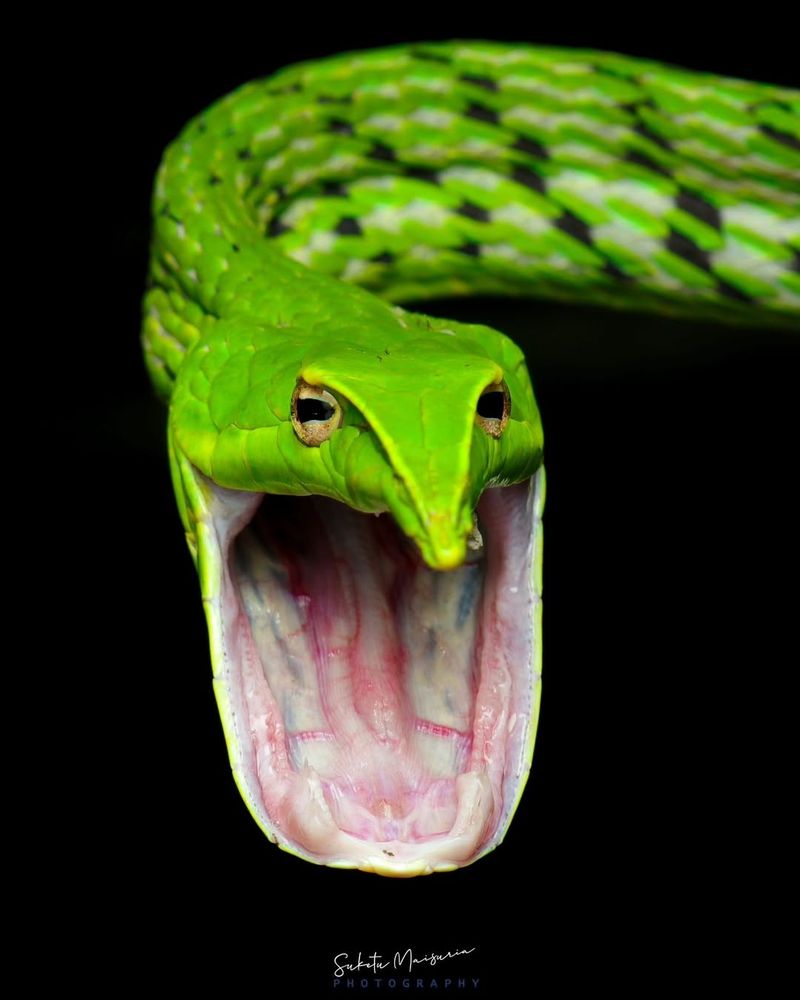
These slender, vine-like snakes transform dramatically when threatened. Their normal pencil-thin bodies expand as they inflate their throats and flatten their necks to appear much larger than they actually are.
The most dramatic part of their display involves opening their mouths extremely wide, revealing a startlingly colorful interior—often black, blue, or white depending on the species. This gaping display exposes their rear fangs and presents a stark contrast to their green exterior, creating a surprising visual threat.
10. Cottonmouth’s White Warning
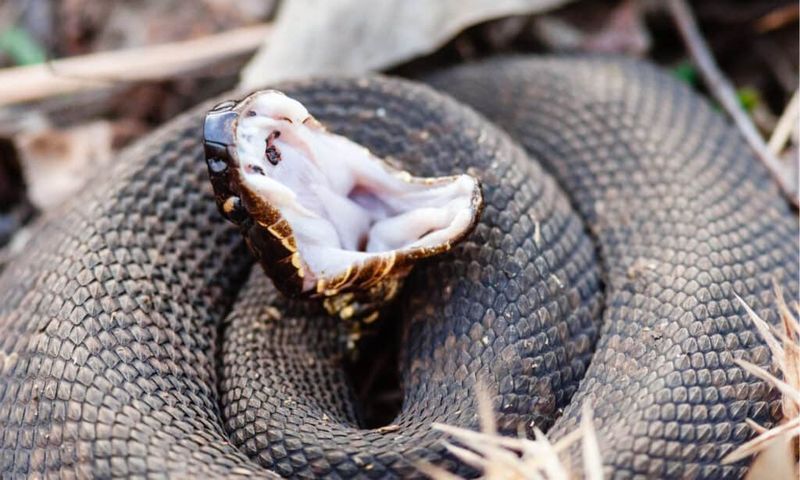
Also known as water moccasins, cottonmouths display one of the most recognizable threat displays in the snake world. When alarmed, they coil up, vibrate their tails, and open their mouths wide to reveal the stark white lining that gives them their name.
The contrast between their dark exterior and bright white mouth creates an unmistakable warning. They’ll often hold this gaping position for an extended time while producing a strong musk odor. Unlike many snakes that flee when possible, cottonmouths are known for standing their ground.
11. Death Adder’s Tail-Luring Trick
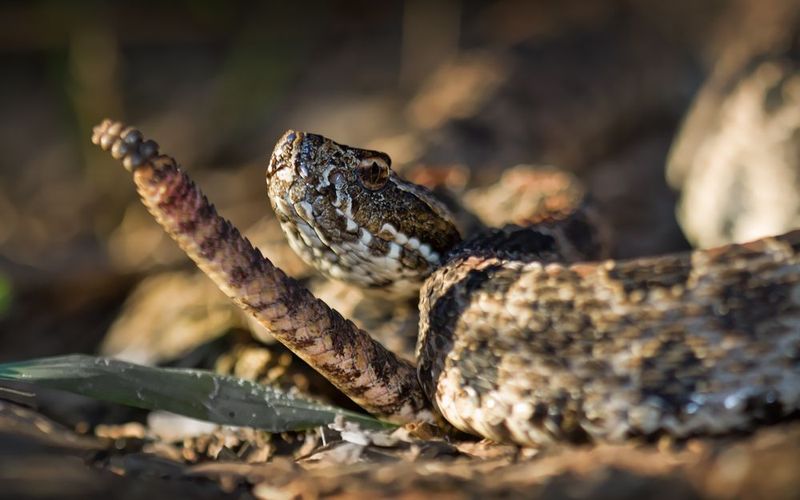
These ambush predators use their tails for both hunting and defense. When threatened, death adders flatten their bodies to appear larger while raising and wiggling their worm-like tail tips as a distraction.
This tail movement serves double duty—when hunting, it lures curious prey close enough to strike. When defending, it diverts attention from the snake’s head. They combine this display with a series of short, explosive hisses that sound like tiny firecrackers popping, creating a multi-sensory warning system.
12. Bush Viper’s Spiky Intimidation
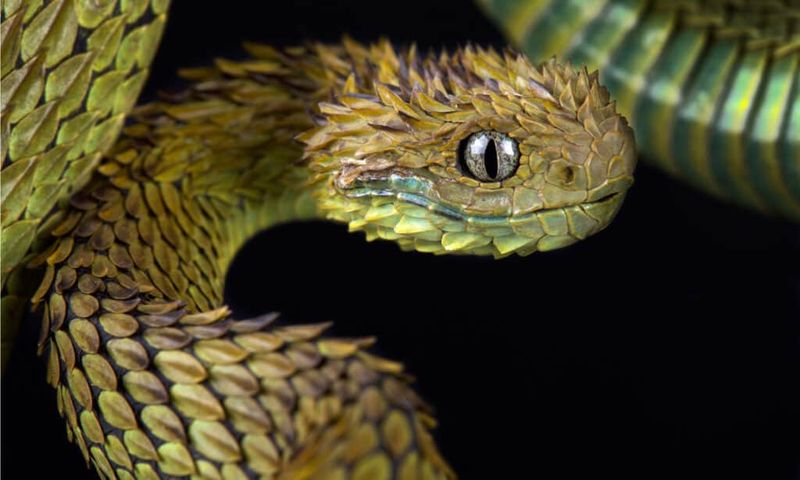
Bush vipers possess some of the most distinctive scales in the snake world—their bodies are covered in long, pointed scales that give them a perpetually bristled appearance. When threatened, they enhance this spiky look by inflating their bodies, making their scales stand out even more prominently.
They coil tightly with their head in the center, forming a spiky ball of danger. Their vivid coloration—often bright green or yellow—combined with their raised scales creates a visual warning that effectively says “I’m not only venomous but also impossible to swallow comfortably.”
13. Flying Snake’s Aerial Escape
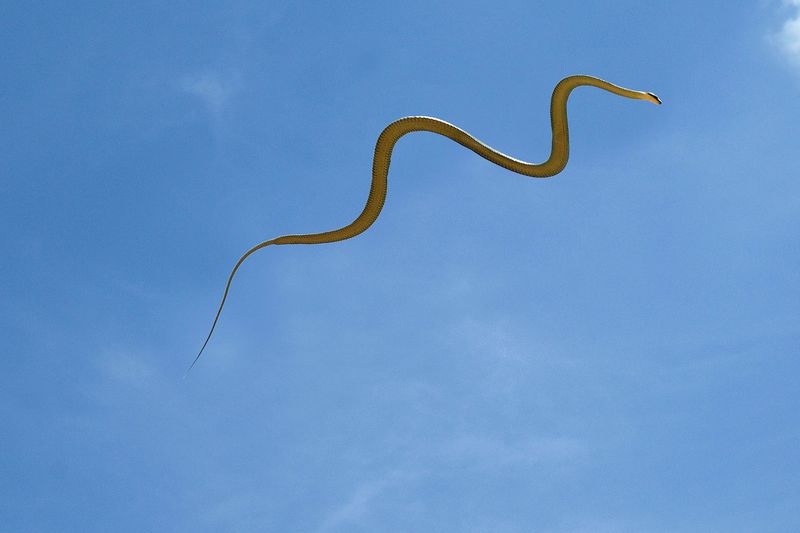
Paradise tree snakes (flying snakes) have developed perhaps the most spectacular escape mechanism of any snake. When threatened high in the trees, they don’t just drop—they glide impressively by flattening their entire bodies into a concave shape.
They launch themselves from branches and undulate in mid-air, achieving remarkable control. While not technically a warning display, this dramatic escape certainly startles predators. They can glide up to 100 feet horizontally, often landing on another tree with surprising accuracy.
14. Mud Snake’s Pointy Defense
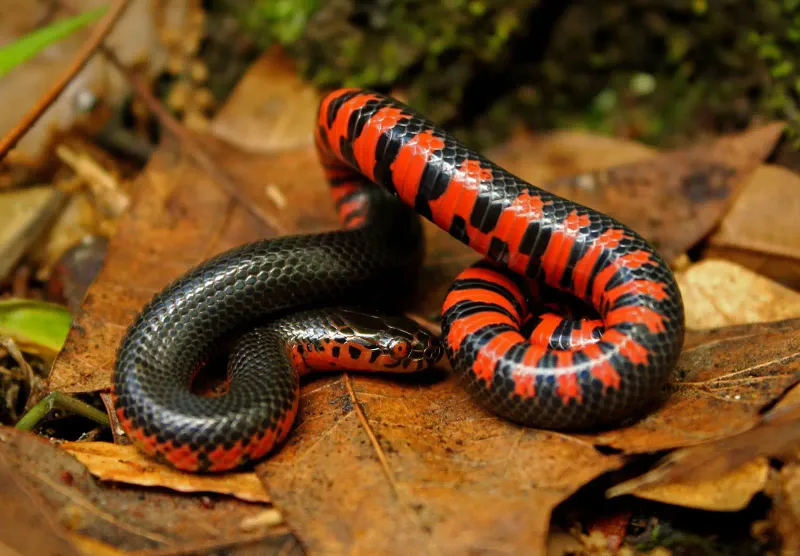
North American mud snakes have developed a unique defensive tactic that might surprise you. When handled, these non-venomous water-lovers press the sharp point of their tail tip firmly against a predator’s hand, almost like they’re trying to stab with a tiny spear.
Though harmless, the sensation is startling enough to cause many predators to release them. They combine this with vigorous body thrashing and occasional release of foul-smelling musk. Despite their intimidating display, mud snakes rarely bite even when extensively provoked.


